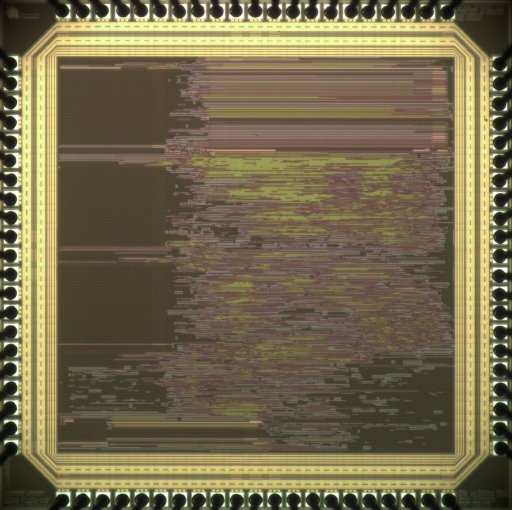The IIS Chip Gallery
ARC (2005)

by

| Application | Biomedical |
| Technology | 250 |
| Manufacturer | UMC |
| Type | Semester Thesis |
| Package | LCC84 |
| Dimensions | 2500μm x 2500μm |
| Gates | 160 kGE |
| Voltage | 2.5 V |
| Power | 1.4 mW, 4MHz, 1.2V |
| Clock | 14.9 MHz |
This ASIC was developed in collaboration with the Electronics Laboratory at ETHZ. The object of the ARC is to recognize different classes of a person's activity. The sensor data is fed to the ARC from a sensor board and the ARC communicates with a QBIC (a wearable computer integrated in a belt), taking configuration data and returning the current class of motion. Providing proper training data, the motion classification is capable of distinguishing up to 16 classes of motion. Particularly a common setup recognizes 6 classes of motion: standing still, walking straight, walking up, walking down, moving up in an elevator, and moving down in an elevator.
The sensor board provides time-sampled, offset corrected and scaled data from four sensor sources: air pressure, GPS altitude information, acceleration Y-axis, and acceleration Z-axis. While the air pressure and the GPS samples have low sampling rates of 1 Hz, the acceleration information comes in at 100 samples per second. The sampled sensor data is in most cases unsuited for a classification. Instead, several features are extracted from the samples and their recent temporal history.
All extracted features are assembled into a feature vector. This vector is compared to a set of 100 training feature vectors stored in the on-chip memory of the ARC. So, the current most likely class of activity is extracted.